From the best places in Spain for solo travel to our inside tips for travelling alone in Spain, this in-depth guide will tell you everything you need to know about going solo in Spain. Vale!
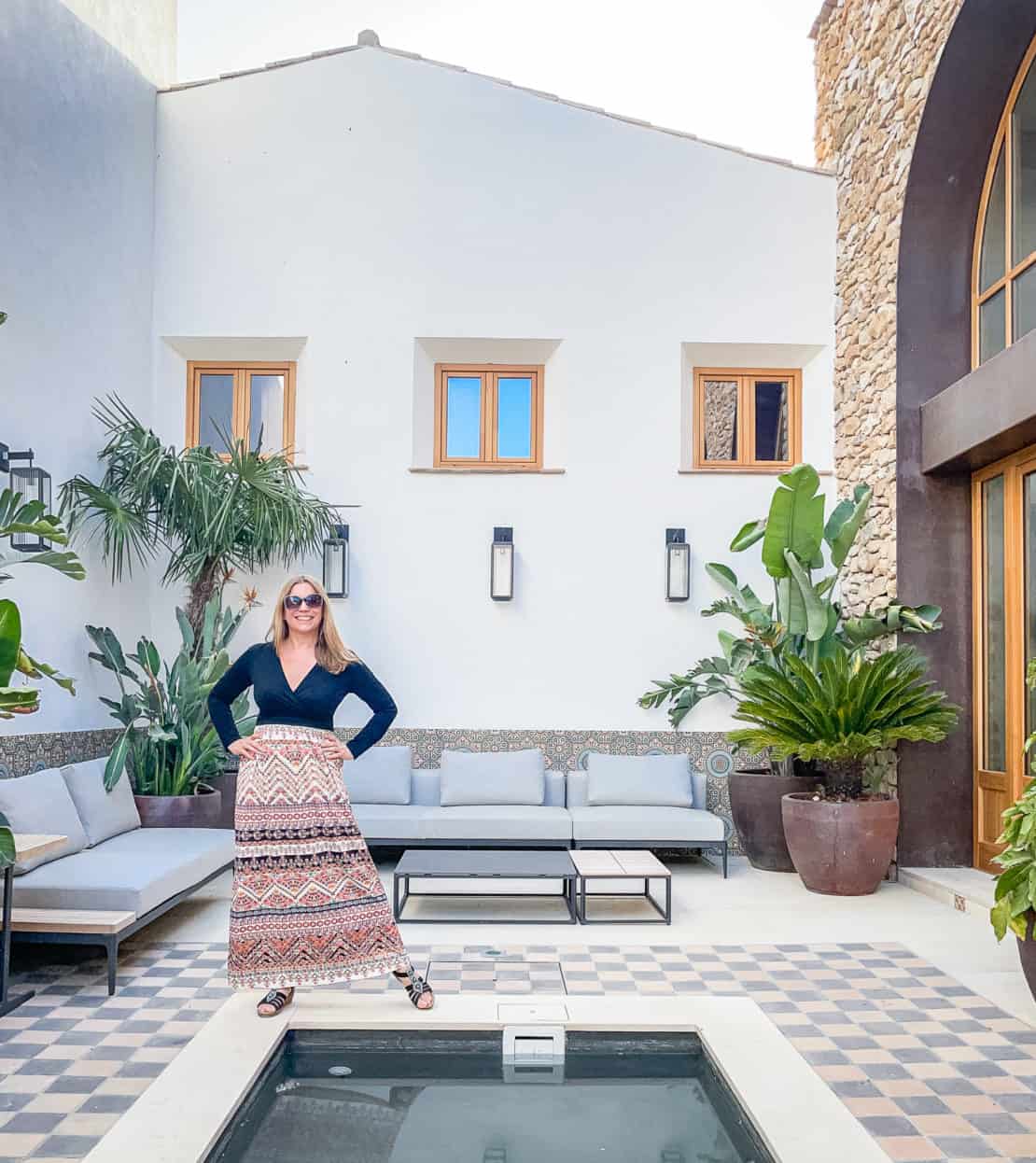
Solo in Spain: The Ultimate Solo Travel Guide to Spain
Ah, the thrill of going solo in Spain. Whether you’re planning a full sabbatical, a two week holiday or an extension to a business trip, Spain makes for a wonderful destination for solo travellers (or solo travelers, my dear American friends.)
Having lived in Spain for years and travelled the length and breadth of the country, I’m here today to share my solo travel tips for Spain and to help you have the trip of a lifetime. Maybe many many trips!
In this article we want to share the best tips and hacks for your solo trip to Spain, as well as reveal some of the best solo travel destinations in the country. Ready? Let’s go! Going solo in Spain awaits!

The best cities in Spain for a solo trip
In general, good news! Most destinations in Spain are perfect for solo travel.
The country is about as safe as it comes, cities are usually walkable and budget-friendly, and Spanish people are generally very welcoming.
So wherever you decide to go, you will have a great time going solo in Spain!
That said, the following cities are among the best destinations for solo travellers because of their safety, affordability and cultural interest. Visit them on their own, or incorporate them into your larger solo travel itinerary!
Did you know? Rules around visas are changing. Find out what you need to know about this at ETIAS Spain
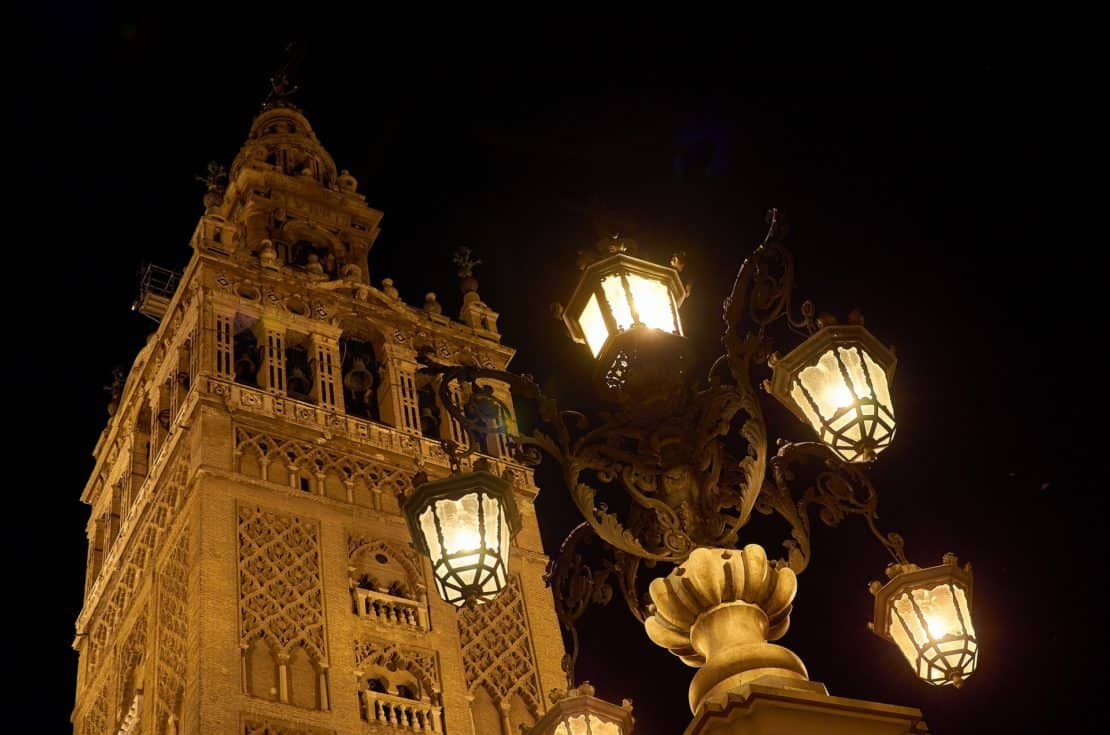
Solo in Seville
The capital city of Andalusia is one of the best destinations to visit on your own. The centre is compact and walkable, the tapas bars accessible and informal and the city itself simply bursts with atmosphere and ideas. Check out the best things to do in Seville here.
Architecture lovers will also have an amazing time in Seville, with the sweeping ceramic Plaza de España and its mosaics, the modern Metropol Parasol and the Alcazar, the ancient Moorish palace that’s a mini Alhambra.
Cross the river that runs through the city and you will arrive in the iconic Triana neighbourhood. Here you will discover the traditional ateliers of Seville, where you can shop for beautifully patterned tiles, dishes and signs.
The only thing you might miss in the city are beaches, since Seville is landlocked, but the Guadalquivir river is a great alternative if you want to enjoy an evening stroll or a relaxing meal near the water.
Still in need of the beach? You can enjoy some of the best beaches in the country in Cadiz, which is only an hour away and easy to reach by renting a car or using public transport.
- See also our road trip itinerary through Andalusia here.
Connections for Seville
- Seville is one of the safest and cleanest cities in Spain, and was recently found to be the best city for solo-travel in Spain by travel company Holidu. The bus and tram system makes it easy to get around, but even on foot it’s very doable to explore the entire city in a couple of days: perfect for a city trip!
- Seville is easily reached by aeroplane thanks to the international airport of Seville and high speed trains from Madrid.
- In general, people in Seville are very welcoming all year round, but if you want to experience the city and its people at their best, plan your trip around the annual fair in April, when the entire city turns into one big party with music, dancing and parades.
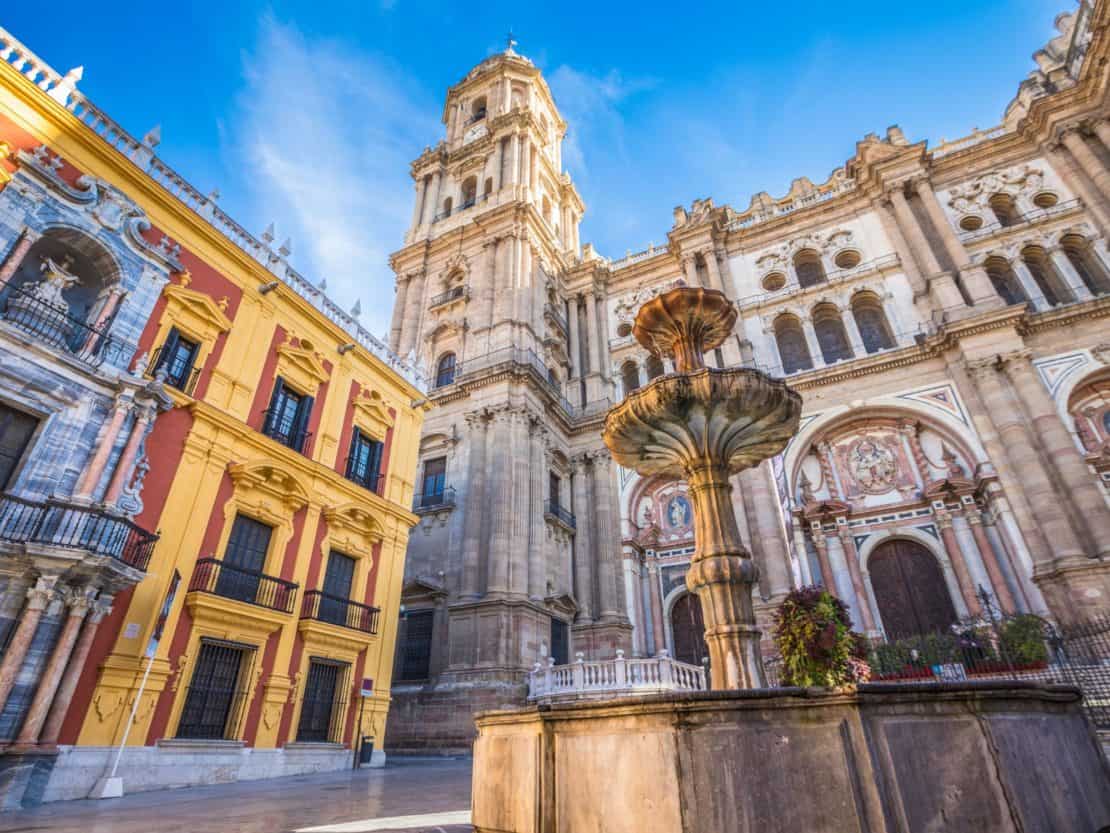
Solo in Malaga
In the past couple of decades, this city on the Mediterranean coast has become increasingly popular with travellers.
Malaga, despite the reputation of some nearby resorts, is a very cultural city: not only can you find several prestigious museums here, such as the Pompidou and the Carmen Thyssen Museum, it is also the birthplace of Pablo Piscasso!
The Picasso Museum and the Casa Natal de Picasso are two musts for everyone who loves this prolific Spanish artist.
Tired of so much art and culture? The city beaches of Malaga are waiting for you to take a well-deserved break. Dotted along the beach promenade are the typical chiringuitos (fish restaurants) where you can enjoy locally-caught fish that’s either fried or prepared on a wood fire.
If you decide to leave the city and explore some of the surrounding towns, Frigiliana and Ronda are two mountain villages that will impress you with their beautiful locations. They are easy to reach by public transport, or by renting a car for the day.
And the adventurers among us can walk the Caminito del Rey, a world-famous walkway along the narrow gorge of El Chorro.
Connections for Malaga
- Malaga is the best-connected city in the south of Spain, with daily flights between its airport and the UK. The train and bus connections also make it extremely easy to visit other cities in the region like Granada, Seville and Cordoba if you want to. The city’s metro system is still being constructed and only has limited connections for now, but the city buses are very reliable and traffic usually isn’t a problem.
- Another popular way of getting round the city are bikes: there are many bike tour companies and bike rentals available throughout the city.
- Malagueños are very friendly and usually speak some English: the city isn’t an expat hub for nothing!
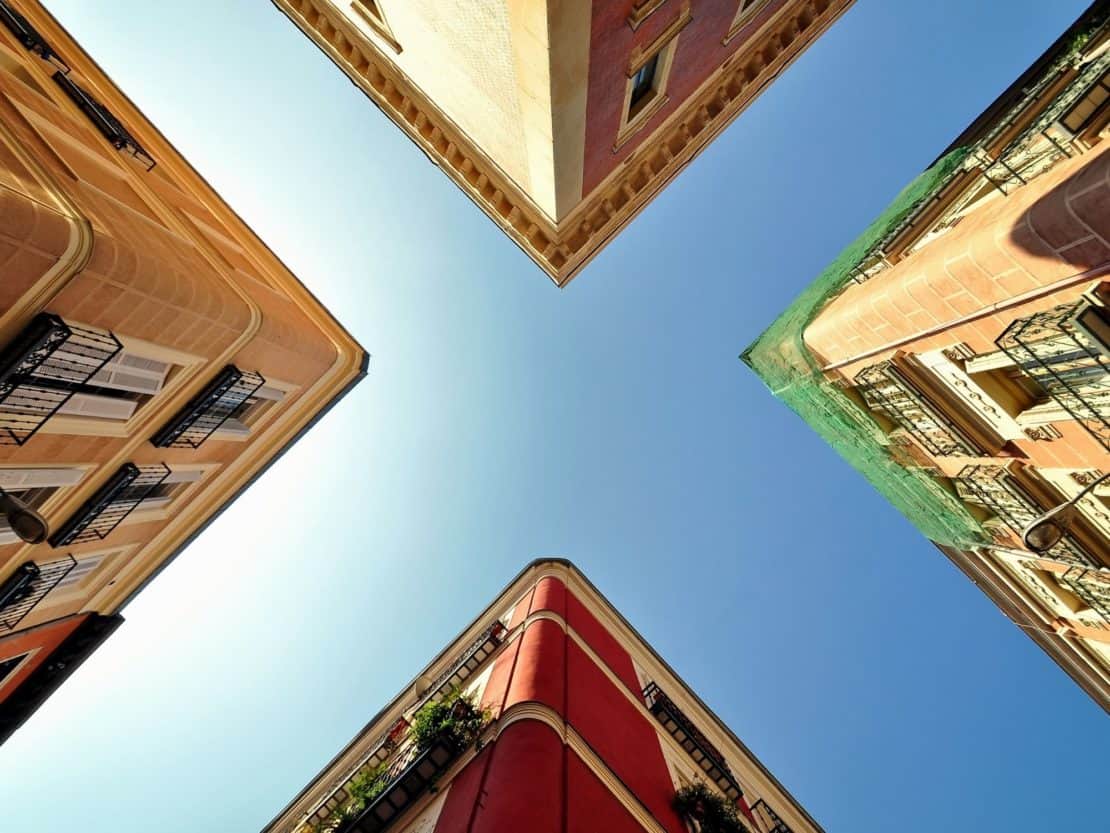
Solo in Madrid
Of course, we can’t miss the capital of Spain from this list!
Madrid is a cosmopolitan hub where you can enjoy some of the finest art, best shopping, lively nightlife and amazing city parks. There are so many museums in Madrid that visiting all of them can take you several days, and each of them is dedicated to a particular type of art.
Visit the Prado to see classic art by the old masters, the Reina Sofía museum for 20th-century art by Picasso, Dalí and others, or the ABC museum for a crash course on everything related to drawing and illustration.
All book lovers should head to the Barrio de las Letras to discover the best second-hand and independent bookshops, and if you like to spend some time people-watching the high-end neighbourhood Chamberí is your place to be!
On the other hand, your evenings are best spent at La Latina, the area with the best tapas and vermouth, a drink that’s extremely popular in Madrid.
Another great place that’s absolutely magical in the evening is the Temple of Debod, an ancient Egyptian temple that was gifted to Spain by the Egyptian government. Everybody agrees that it’s the best spot to enjoy the sunset in Madrid!
And, don’t forget to taste some classic chocolate y churros at the oldest chocolateria in Madrid.
Read this article on 101 fun facts about Madrid here.
Connections to Madrid
- Because Madrid is the capital of Spain, its airport is extremely well-connected. The metro system covers almost every area of the city, and if you want to explore some nearby cities like Toledo and Salamanca, the high-speed trains leaving from Atocha station will get you there in a flash.
- The city is pretty safe, although it’s always best to be cautious at night, and the madrileños are always happy to help you find your way or to tell you about some of the secret spots in the city.
- Watch your pockets near tourist attractions, just in case. Pick pockets do like to target these areas.
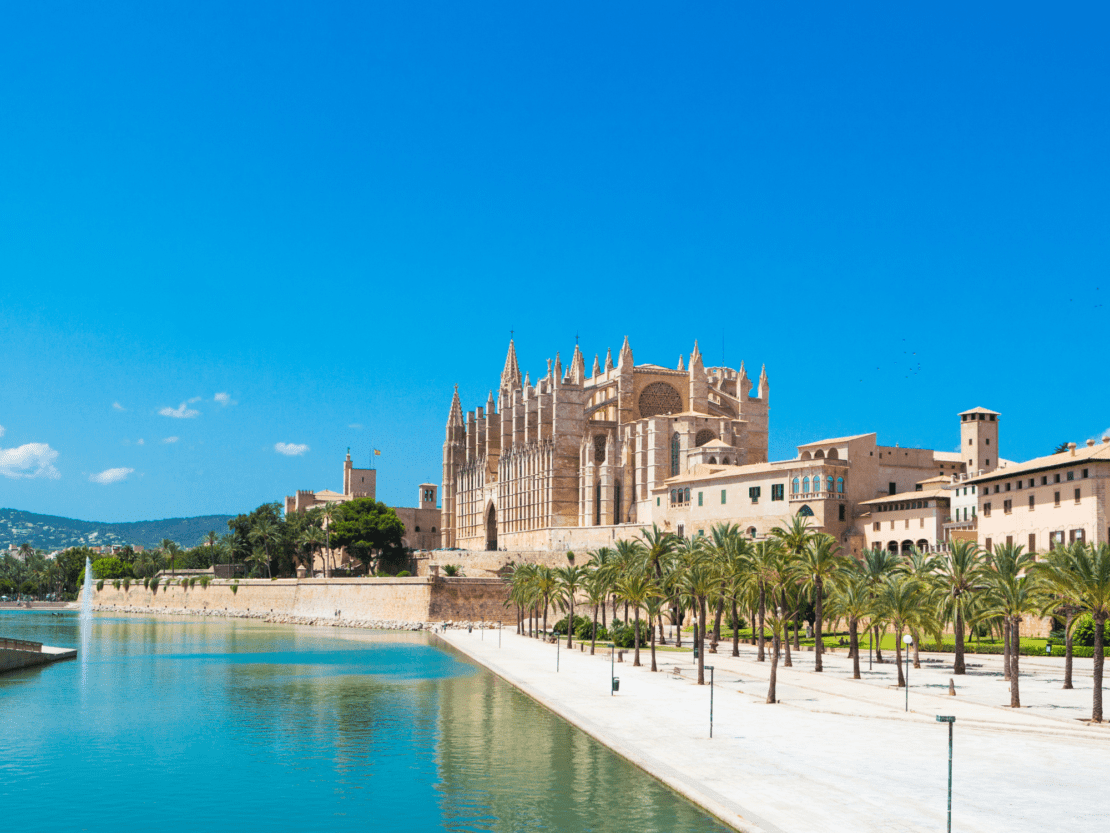
Solo in Palma de Mallorca
To be solo in Spain away from the mainland, try the island atmosphere of Mallorca. Palma, the capital, oozes atmosphere and charm and there is plenty to see and do in the city itself.
Start with the impressive cathedral in the centre, the Castell de Bellver with its amazing views of Palma de Mallorca and the Mediterranean, and then follow that up with the modernist Sa Llotja museum.
But however beautiful Palma is, it’s the beaches and coves on the coast who are the real stars of the show!
With fine white sand and crystal clear water, the beaches of Palma de Mallorca are perfect for some well-deserved rest and relaxation.
You can easily explore the rest of the island by car or train: discover the old city of Alcudia, the botanical gardens of the Sierra de Tramuntana and the stunning Drach caves.
And if you want a change of scenery, why not go island hopping and visit some of the other Balearic Islands as a day trip? You can book a passage on the ferry that leaves from the port of Palma de Mallorca and reach Ibiza in a couple of hours.
Palma de Mallorca is a great choice for a solo trip that combines a city break with beach life.
Connections to Palma
The local airport has many international connections every day of the week, and the city itself is the central departure point of many ferry routes in case you want to visit the other islands or even the Spanish mainland. The city is very safe and not too big, which makes it easy to get around on foot, and the locals are always open for conversation or to give you a helping hand with directions.

Solo in Valencia
Our next recommended solo travel destination is Valencia! Go solo in Spain in style with this stunning city which combines great beaches with rich culture and a pulsing nightlife.
The star of Valencia is the City of Arts and Sciences, a futuristic building that houses a planetarium, a cinema and an aquarium among others. This building is a must for everyone who visits Valencia, even if you never step inside.
Valencia is also home to more traditional impressive and beautiful buildings like the cathedral, the Lonja de Seda and the Mercado Central. Wander about the historical centre and discover every corner of the city and its beautiful places.
Don’t miss the Barrio del Carmen. This neighbourhood to the north of the centre showcases a lot of old 14th-century buildings, but at the same time, it is the bohemian area of Valencia. Discover boutiques, art galleries and fun bars in some of the most exquisite buildings of the city.
But Valencia is not only about culture and shopping! Head to the city’s beaches for a relaxing day in the sun, or make a day trip to the nearby Albufera Natural Park, a freshwater lagoon where you can enjoy the beautiful landscape through hikes and boat rides.
Connecting to Valencia
The international airport of Valencia makes it very easy to get to the city for a holiday, thanks to the many connections with major airports in the UK and across Europe and within Spain.
The city is easily accessible on foot and by bus or bike, and is well-connected to other coastal cities of the Costa Blanca in case you want to explore the area a bit more. There is always a vibrant, welcoming atmosphere in the city, with locals more than happy to help you find your way or simply have a chat.
If you want to experience the city at its best, visit during the Fallas in March! The city comes alive during this festival with giant puppets, fireworks and bonfires that really make for a standout stay.
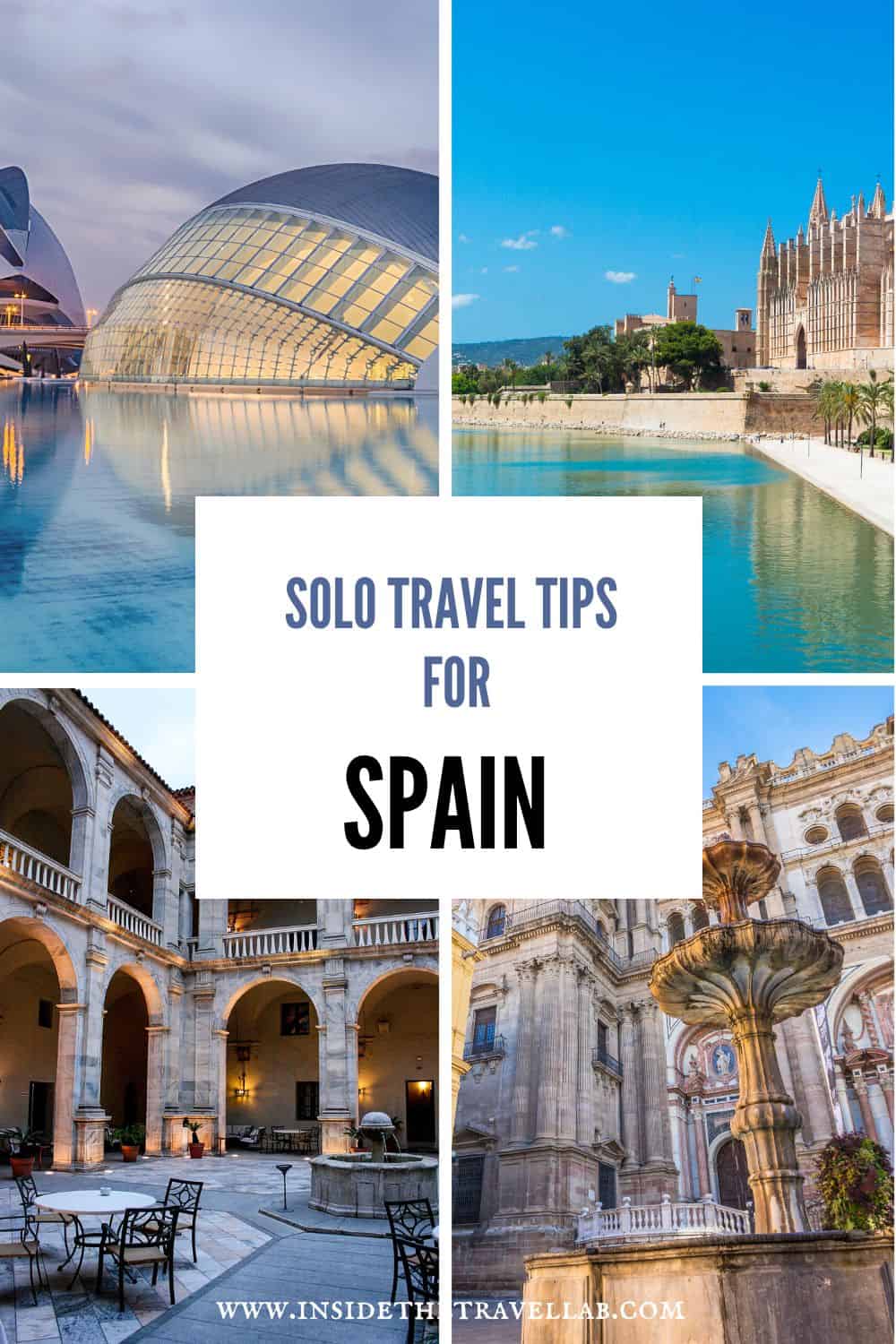
Solo Travel Tips for Spain
In many ways, the best solo travel tips for Spain resemble the best travel tips for most destinations and most travel scenarios. But there are a few things to look out for when you’re travelling solo in Spain.
Where to stay when travelling solo in Spain
Whether you choose to stay in a hotel, holiday apartment or B&B is largely up to personal preference, but before booking, here are a few things to bear in mind.
- Avoid party neighbourhoods if you’re looking for a restful stay.
- When you travel solo, it’s a good idea to choose accommodation with good transport options to decrease the likelihood of you walking alone at night to get home.
- If you’re looking to meet people, then B&Bs or shared accommodation may help with this, although you may also feel more unsafe.
- If you’re going to struggle carrying your luggage up eight flights of stairs without a lift by yourself, then check that your accommodation has a lift.
- Personally, I always feel safest in a hotel with a name that I recognise or that someone else has recommended to me. And many other solo female travelers feel the same.
- Check out our list of the best travel resources to help find the right place to stay for you, from big chains to boutique hotels, all at the best price.

Other great destinations for solo travel in Spain
Of course, it’s hard to stop at just those major cities. Barcelona is another must see, oozing with UNESCO World Heritage Sites, great food and the sea. Gaze up at the unfinished Sagrada Familia, wander around the Gothic Quarter and enjoy these hidden gems in Barcelona.
The Canary Islands are also a good spot for people who love beaches and hiking, surrounded by the waves of the Atlantic Ocean. Both Gran Canaria and Tenerife have frequent flights to Europe.
The Basque Country in Spain’s northwest contains the foodie city of San Sebastian and the futuristic Guggenheim museum in Bilbao.
How to travel around Spain on your own
By and large, Spain has an easy to navigate transport system. Most of the cities mentioned are easily walkable and Google Maps and an eSIM card like this one from Airalo will cover almost everything you need.
However, here are a few more details about getting around Spain on your own…
Getting around Spain’s Cities
Cities in Spain are very walkable, so most of the time you won’t feel the need to use public transport, especially if you are staying in or near the city centre. But if you get tired of walking everywhere, city buses are cheap and reliable.
While each city has its own inner-city transport company, tickets are usually priced the same in each city: around 1.50 euros per person.
If you are staying in one city for a couple of days, consider using a multi-trip card, which is more convenient (Spanish buses don’t carry a lot of change) and will save you a lot of money. These cards are easily bought at any ticket shop or Metro station and can be charged with 10 trips at a time for a low price.
Large cities like Madrid and Barcelona also have an underground system that will take you from one corner of the city to another in a matter of minutes. On top of that, taxis and ride-sharing apps like Uber are very popular if you want to take a more direct route to your destination.
Cross country travel in Spain
If you don’t want to stay in one place but rather want to travel through the country, there are several options available to you. If you love travelling independently and don’t want to have to pay attention to the time, renting a car is the best choice for you. Check out our article on the best road trips in Spain here.
Apart from that, there are many public transport methods available to choose from. The coastal areas and large cities are all connected by a high-speed railway, the AVE, which makes it easy to travel from one city to another.
Urban areas usually also have a local train connection called Cercanías that is very convenient to use for day trips and short excursions. Until the end of the year, certain types of train tickets are free, so take advantage of this initiative to explore the country!
Another long-distance public transport option are the long-distance buses from the ALSA company. While they might take a bit more time to get you to your destination, the buses are very punctual and trust-worthy. The bus network is also more extensive than the railways, and is sometimes your only option if your destination does not have a train station.
As an alternative to buses there is BlaBlaCar, a long-distance ride-sharing service that allows you to book seats in the cars of people who are travelling to your destination as well. The app is very reliable and works with a star system to rate drivers just like other similar apps. Best of all, the price of a journey is usually the same as or even cheaper than a bus ticket.
The public transport system in Spain is very safe, both for short and long journeys. In cities, you won’t have to wait long for your connection as buses, trams and trains come every couple of minutes, and the long-distance transport is always on time. Public transportation is also one of the preferred methods of locals, since it is convenient and cheap. This also means that most of the time, you will not be completely alone when you travel using the bus or train.
As usual, though, it’s a good idea to avoid travelling on your own at night. Also, keep valuables hidden away, don’t flaunt your cash and try to look streetwise and businesslike as you walk around.
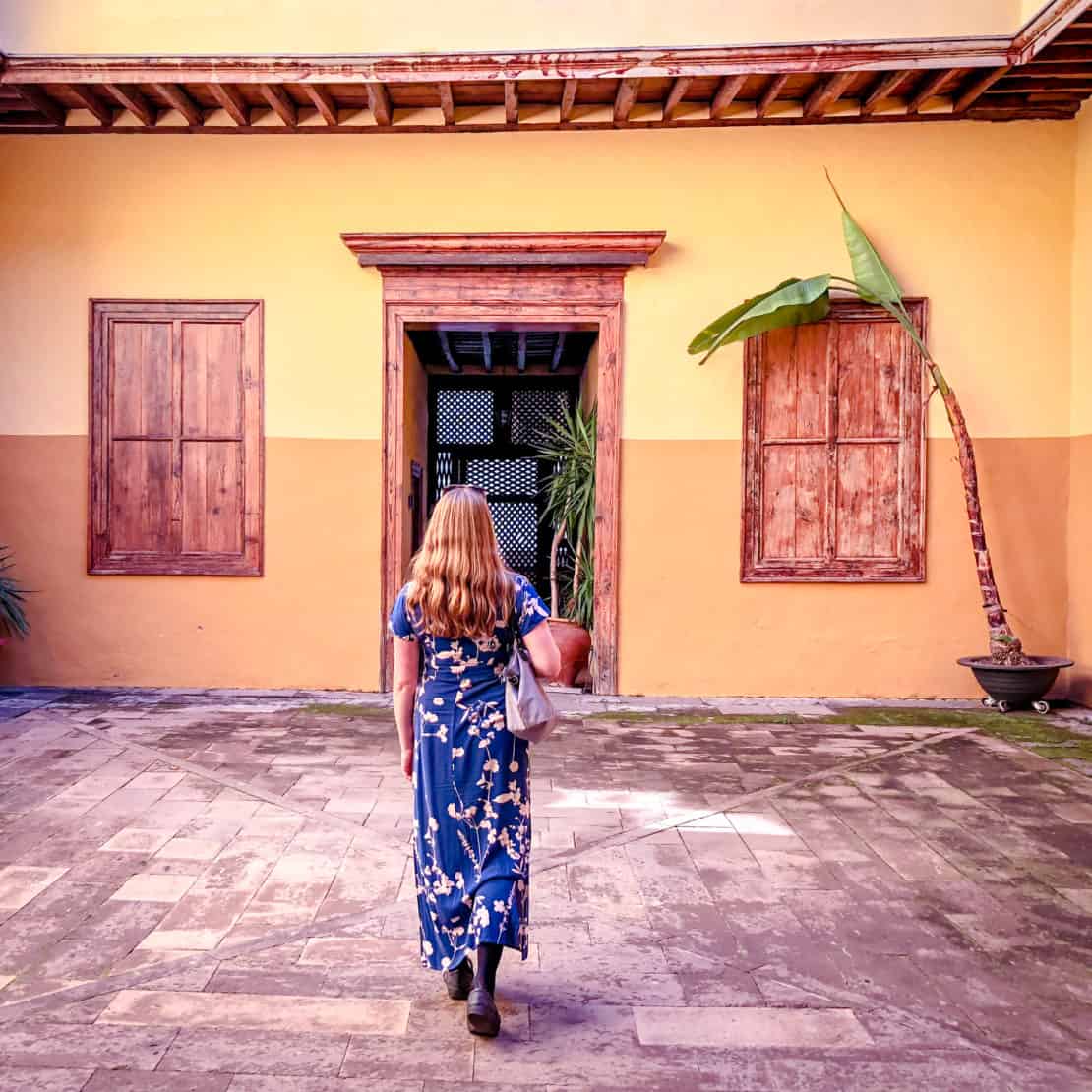
Fast Facts about Solo Travel in Spain
- The official language is Castilian Spanish but you will hear Catalan and many others in different regions.
- The currency in Spain is the Euro. You can easily pick up cash before you travel, at the airport or from ATMs.
- While credit cards are widely accepted in the city centres (or city centers ;-) in more remote areas and small, independent bodegas, you’ll need to carry some cash with you.
- The best time to visit most cities is in autumn/fall or spring. Summer can get very hot, apart from in the north.
Solo Travel Hacks for Spain
And now on to the best solo travel tips for Spain…
Meeting New People
One of the best parts of solo travel is meeting new people!
In general, the Spanish are very friendly and open for a chat any time of the day. You can be having a coffee on a terrace or waiting for the bus, and start up a conversation with the person sitting next to you.
Another option is Meetup, a site where you can find all kinds of activities to join. The website is very popular in Spain, especially in the more urban areas, and there are plenty of activities to find. From sunset yoga to board game nights, find the activity that you like best and head over. It’s a great way to have fun and meet new friends!
Guided Tours
When you’re in a city you’ve never been before, guided tours are a great way to explore your surroundings and get an idea of where the most important and interesting landmarks are. But instead of taking a regular tour, why don’t you book an alternative tour instead and have some fun while you explore?
Ghost tours, tapas tours, puzzle tours, bike tours… Most cities have several fun alternatives to the regular walking tours available.
Geocaching
If tours are not your thing, another fun way to discover Spanish cities are by geocaching, a.k.a. finding hidden containers all over the city. You can easily geocache with just your phone and the geocaching app!
Staying in touch with people at home
While solo travel is fun, most of us still want to stay in touch with the people at home. That’s why it’s best to check the prices for your international phone plan before you get carried away and face a huge phone bill as a result!
Of course, a lot of places in Spain offer free WiFi, but it can be a bit hit-or-miss with the internet quality. If you want to have a great internet connection for a low price, we recommend that you consider getting a Spanish pay as you go SIM card, especially if you are travelling in Spain for a longer period of time.
There are many phone companies offering cheap pay-as-you-go plans with mobile data included. Lobster and O2 are two of the most popular companies with expats in Spain, as they have great customer service in English. For shorter trips, I’d highly recommend Airalo, an eSIM service. You don’t have to fiddle around changing a physical SIM, which makes it much more practical. Check out our article on eSIMs in Europe here.
Safety Travel Tips for Spain
- Always have a plan for how you’re going to get home safely.
- Take a business card of the hotel or place you’re staying so you can show a taxi driver if needs be.
- If in doubt, swallow the extra cost and take a taxi home. Better safe than sorry.
- You probably don’t need a money belt – it just attracts attention.
In conclusion: Going solo in Spain
Apart from these tips, the regular solo travel guidelines are also good to follow: use common sense, be open to new experiences, take care of yourself and respect local customs.
With these recommendations in mind, you will soon be able to plan the solo trip of your dreams in Spain! Check out our guide to travelling Spain in summer and book that flight.
So – where are you going first?
